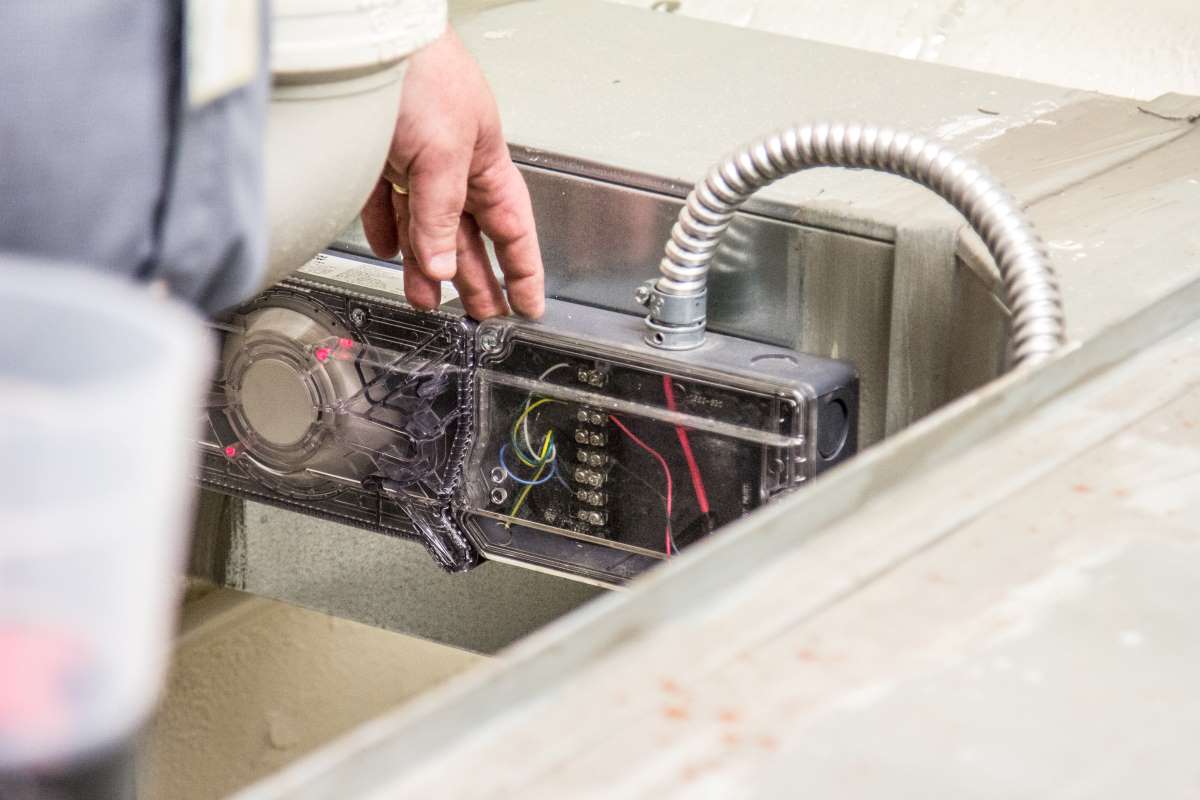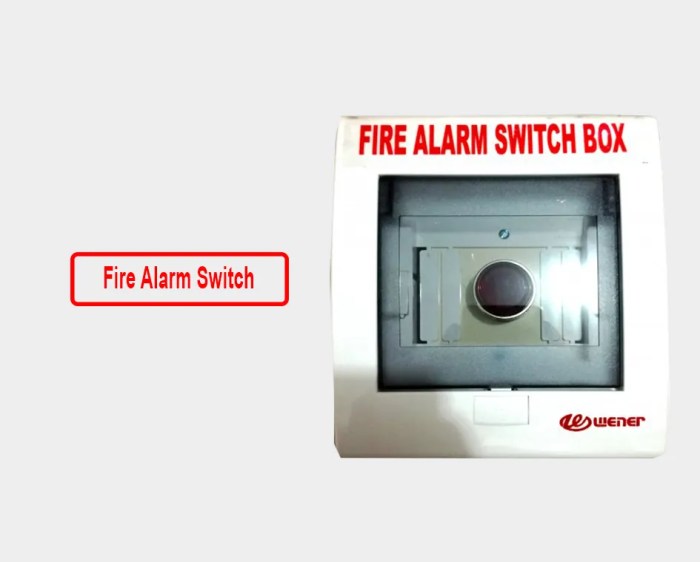Fire alarm HVAC shutdown relays play a critical role in preventing the spread of smoke and fire in buildings. They are essential components of fire alarm systems, working in conjunction with HVAC systems to isolate affected areas and minimize the risk to occupants.
In this comprehensive guide, we will explore the different types, features, and applications of fire alarm HVAC shutdown relays. We will also discuss their installation, maintenance, and testing procedures to ensure optimal performance and compliance with industry regulations.
Definition and Purpose of Fire Alarm HVAC Shutdown Relay

A fire alarm HVAC shutdown relay is a critical component in fire safety systems. It serves as an interface between a fire alarm system and an HVAC (Heating, Ventilation, and Air Conditioning) system, enabling the automatic shutdown of HVAC units in the event of a fire alarm.
When a fire alarm is activated, the relay receives a signal from the fire alarm system. It then initiates the shutdown of HVAC units, including fans, blowers, and dampers. This shutdown helps prevent the spread of smoke and fire through the HVAC system’s ductwork, ensuring the safety of occupants and minimizing property damage.
Integration with Fire Alarm and HVAC Systems
The fire alarm HVAC shutdown relay is typically connected to the fire alarm system’s control panel and the HVAC system’s power supply. When the fire alarm is triggered, the control panel sends a signal to the relay, which in turn cuts off power to the HVAC units.
This integration ensures that the HVAC system is immediately disabled in the event of a fire, preventing the spread of smoke and fire through the ductwork. It also helps maintain positive air pressure in stairwells and other designated areas, facilitating safe evacuation.
Types and Features of Fire Alarm HVAC Shutdown Relays

Fire alarm HVAC shutdown relays come in various types, each with its unique characteristics and applications. Understanding the different types and their features is crucial for selecting the most suitable relay for your specific fire safety system.
The primary types of fire alarm HVAC shutdown relays include:
Types of Fire Alarm HVAC Shutdown Relays
- Electromechanical Relays:These relays use physical contacts to switch circuits, making them less susceptible to electrical noise and surges. They offer high reliability and durability but have slower switching speeds compared to solid-state relays.
- Solid-State Relays (SSRs):SSRs use electronic components to switch circuits, resulting in faster switching speeds and reduced contact wear. They are less affected by electrical noise and provide longer lifespans, but may be more sensitive to high temperatures and voltage transients.
- Hybrid Relays:Hybrid relays combine the advantages of electromechanical and solid-state relays. They utilize physical contacts for high current switching while incorporating electronic components for faster switching speeds and reduced contact wear.
Comparison of Fire Alarm HVAC Shutdown Relay Features
| Feature | Electromechanical Relays | Solid-State Relays | Hybrid Relays |
|---|---|---|---|
| Switching Speed | Slow | Fast | Medium |
| Contact Wear | High | Low | Medium |
| Electrical Noise Susceptibility | Low | High | Medium |
| Temperature Sensitivity | Low | High | Medium |
| Voltage Transient Sensitivity | Low | High | Medium |
| Lifespan | Long | Longer | Medium |
| Cost | Lower | Higher | Medium |
Advantages and Disadvantages of Fire Alarm HVAC Shutdown Relay Types
Each type of fire alarm HVAC shutdown relay has its own advantages and disadvantages:
Electromechanical Relays:
- Advantages:High reliability, low cost, less susceptible to electrical noise
- Disadvantages:Slow switching speed, higher contact wear
Solid-State Relays:
- Advantages:Fast switching speed, reduced contact wear, longer lifespan
- Disadvantages:Higher cost, more sensitive to electrical noise and temperature transients
Hybrid Relays:
Fire alarm HVAC shutdown relays play a crucial role in protecting buildings from smoke and fire damage. They automatically shut off HVAC systems when a fire alarm is triggered, preventing the spread of smoke and toxic fumes through the building.
Incidentally, a juice company produced 8064 bottles of their new organic blend last month, a testament to the growing demand for healthy and sustainable products. Returning to our topic, fire alarm HVAC shutdown relays ensure that HVAC systems don’t contribute to the spread of fire, making them an essential safety measure for any building.
- Advantages:Balanced combination of features from electromechanical and solid-state relays
- Disadvantages:May not fully optimize the advantages of either type
Installation and Wiring of Fire Alarm HVAC Shutdown Relays

Installing a fire alarm HVAC shutdown relay involves a few essential steps:
- Identify the location:Determine the optimal placement of the relay, considering factors like accessibility, proximity to the HVAC system, and compliance with building codes.
- Prepare the mounting surface:Ensure the mounting surface is clean, level, and free from obstructions. Mark the screw holes according to the relay’s mounting template.
- Install the relay:Secure the relay to the mounting surface using appropriate screws or bolts. Ensure the relay is properly aligned and firmly mounted.
- Connect the wiring:Refer to the wiring diagram provided by the relay manufacturer to connect the relay to the fire alarm system and HVAC system. Typically, the relay has terminals for power, ground, fire alarm signal, and HVAC control signal.
- Test the operation:Once the wiring is complete, test the relay’s operation by simulating a fire alarm signal. Verify that the relay activates and deactivates the HVAC system as intended.
Safety Precautions and Code Requirements:
- Qualified electrician:Installation should be performed by a qualified electrician who is familiar with fire alarm and HVAC systems.
- Compliance with codes:Ensure the installation adheres to local building codes and fire safety regulations.
- Proper labeling:Clearly label the relay and associated wiring for easy identification during maintenance or troubleshooting.
- Periodic testing:Regularly test the relay’s operation to ensure its reliability and effectiveness in the event of a fire.
Wiring Diagram:
The wiring diagram for a typical fire alarm HVAC shutdown relay may include the following connections:
- Power:Connect to a reliable power source, typically 120VAC or 240VAC.
- Ground:Connect to the electrical ground for proper grounding.
- Fire alarm signal:Connect to the normally open (NO) or normally closed (NC) contacts of the fire alarm control panel.
- HVAC control signal:Connect to the control terminals of the HVAC system, such as the thermostat or fan coil unit.
The specific wiring connections may vary depending on the relay model and the HVAC system’s requirements. Refer to the manufacturer’s instructions for detailed guidance.
Maintenance and Testing of Fire Alarm HVAC Shutdown Relays

Regular maintenance and testing of fire alarm HVAC shutdown relays are crucial to ensure their reliable operation and ability to protect lives and property. Proper maintenance and testing can prevent malfunctions, detect potential issues early on, and ensure the relays function as intended during an emergency.
Routine maintenance should include visual inspections, cleaning, and functional testing. Visual inspections can identify any physical damage, corrosion, or loose connections. Cleaning removes dust, debris, or contaminants that could affect the relay’s operation. Functional testing verifies the relay’s ability to receive a signal from the fire alarm system and activate the HVAC shutdown sequence.
Testing Fire Alarm HVAC Shutdown Relays
Testing fire alarm HVAC shutdown relays involves simulating a fire alarm signal and observing the relay’s response. This can be done using a fire alarm system tester or a dedicated relay tester. The test should verify that the relay receives the signal, activates the HVAC shutdown sequence, and resets properly after the signal is removed.
Regular testing helps identify any issues or malfunctions that may affect the relay’s performance. Common problems that can be detected through testing include:
- Relay not receiving the fire alarm signal
- Relay not activating the HVAC shutdown sequence
- Relay not resetting properly after the fire alarm signal is removed
By addressing these issues promptly, you can ensure that the fire alarm HVAC shutdown relay system remains in good working order and ready to protect lives and property in the event of a fire.
Regulations and Standards for Fire Alarm HVAC Shutdown Relays

Fire alarm HVAC shutdown relays are critical components of fire safety systems, and their use is governed by various industry regulations and standards. These codes and standards provide guidelines for the design, installation, and maintenance of these relays to ensure safety and compliance.
The primary purpose of these regulations is to minimize the spread of smoke and fire by ensuring that HVAC systems are shut down promptly when a fire is detected. This helps to contain the fire, reduce smoke inhalation, and facilitate safe evacuation.
Relevant Codes and Standards
- National Fire Protection Association (NFPA) 72:NFPA 72 is a comprehensive code that covers the design, installation, and maintenance of fire alarm and signaling systems, including HVAC shutdown relays.
- International Building Code (IBC):The IBC is a model code that provides minimum requirements for building construction, including provisions for fire alarm systems and HVAC shutdown relays.
- International Mechanical Code (IMC):The IMC is a model code that regulates the design, installation, and maintenance of mechanical systems, including HVAC systems and shutdown relays.
Case Studies and Best Practices for Fire Alarm HVAC Shutdown Relays
Fire alarm HVAC shutdown relays play a critical role in mitigating the spread of smoke and fire in buildings. Here are some case studies and best practices to ensure their effectiveness:
Case Studies
- A fire alarm HVAC shutdown relay successfully prevented the spread of smoke and fire in a high-rise office building. The relay triggered the shutdown of HVAC systems, containing the fire to the room of origin and preventing its spread through the building’s ventilation system.
- In a hospital, a fire alarm HVAC shutdown relay was instrumental in protecting critical care patients. The relay shut down HVAC systems in the affected area, minimizing smoke exposure and ensuring a safe environment for patients and staff.
Best Practices, Fire alarm hvac shutdown relay
To ensure optimal performance of fire alarm HVAC shutdown relays, consider the following best practices:
- Selection:Choose relays that meet the specific requirements of the building, including voltage, amperage, and compatibility with HVAC systems.
- Installation:Install relays in accessible locations near HVAC equipment, ensuring they are protected from physical damage and environmental hazards.
- Wiring:Use proper wiring techniques and materials to ensure reliable connections and prevent electrical faults.
- Maintenance:Regularly inspect and test relays to verify their functionality and replace them if necessary. Follow manufacturer’s maintenance guidelines.
- Training:Provide training to building occupants and staff on the importance of fire alarm HVAC shutdown relays and how to operate them in an emergency.
FAQ Overview
What is the purpose of a fire alarm HVAC shutdown relay?
A fire alarm HVAC shutdown relay is designed to automatically shut down the HVAC system in the event of a fire alarm, preventing the spread of smoke and fire through the ductwork.
How does a fire alarm HVAC shutdown relay work?
When a fire alarm is triggered, the relay receives a signal and activates, interrupting the power supply to the HVAC system. This prevents the fan from spreading smoke and flames through the building.
What are the different types of fire alarm HVAC shutdown relays?
There are various types of fire alarm HVAC shutdown relays available, including normally open, normally closed, and latching relays. Each type has its own advantages and disadvantages, depending on the specific application.